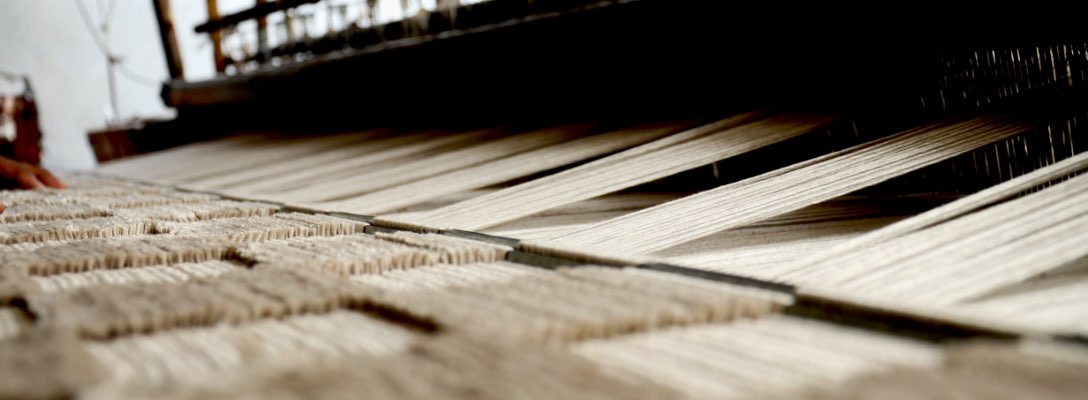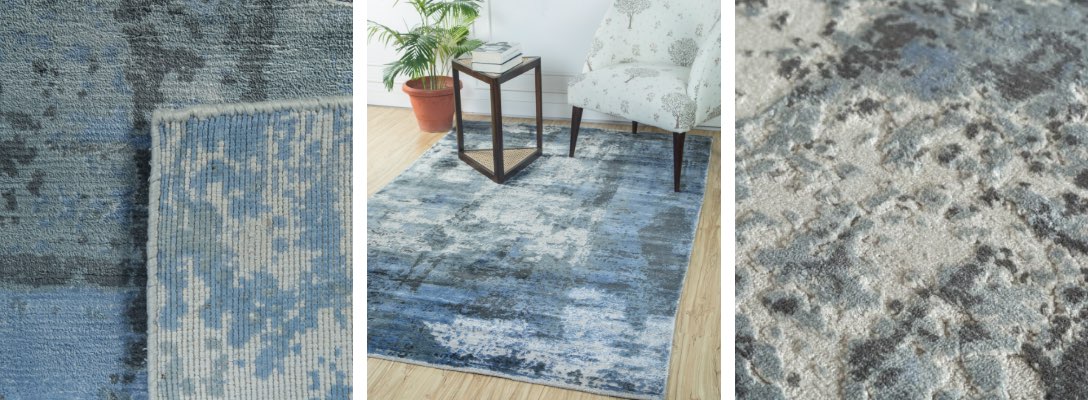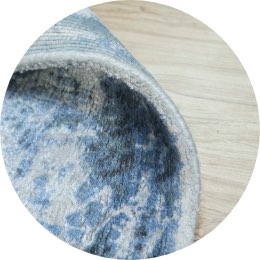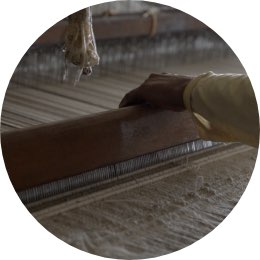You are on our Italy website. Please select your region to see content specific for your location.
Hand-Loom
Hand-Loom
The Weaving Process
Very similar to handloom textile, a carpet is woven on a loom. The loom holds the warp (the vertical threads) in place and allows the interweaving of the weft (horizontal threads). A shuttle is moved across with a pedal to interlock each line.

This method is easiest for monotone rugs and gives a printed finish to the carpet. If the carpet has to be designed with multiple colors, the color of yarn needs to be changed at the right place to help create the final design. Handloom rugs are crafted with a loop pile and is then cut to make a cut pile. Intermixing loop and cut pile gives a unique color effect to the rugs, especially for bamboo silk, as the shine of the color is different along the length of the yarn as compared to the tip. These rugs are crafted in 2 months and can last for 10-12 years.
The Rug

How to Identify?
Hand-loomed rugs usually have a low to medium pile (other than shags, which have a deep pile) and have a canvas backing added to them. They can also be denoted by the use of solid colors and see a line by line effect to the rug.

Pile Height
Low to Medium. Comfortable to walk on.

Durability & Intricacy
Product life of 10-12 years. Most rugs are solid but creatively designed to create tonal effects.

Weaving Technique
Weavers use a loom to create these rugs by interweaving of the weft threads.
Ideal space
Any room that can be uplifted by the use of solid colors.

Pros
Different types of looms can craft versatile rugs; like felted textures, shag, naturals or solid and border rugs.

Cons
Intricate designs aren’t made in this style and the rugs come in solid colors. The colors can be gradated at the most.


















